Pre-Race
The week leading up to the Kibblesworth Hill Climb felt like a turning point for me. After the ups and downs of previous races, this was the final qualifier before the National Hill Climb Championships on the 27th of October. It felt like the real start of my push toward Nationals, so I was ready to give it my all, even if I hadn’t had the most consistent training.
I always feel a mix of excitement and anxiety before a race, and this was no different. But arriving and seeing familiar faces and being part of such a supportive cycling community always puts my mind at ease. This is where local clubs like Sunderland Clarion CC really come into their own. They’re not just organizers—they’re the backbone of cycling in the UK. Without clubs like these putting on events and supporting riders of all abilities, cycling wouldn’t be what it is today. It’s the volunteers, race organizers, and fellow cyclists that keep this sport alive and they all deserve a lot of praise for their efforts!
If you’re new to cycling and want to try racing, it’s pretty easy to get involved. You’ll need to create an account on the Cycling Time Trials (CTT) website, where you can enter events. Most races cost around £15 to enter and close about a week beforehand. The CTT website is a goldmine of information on everything from event schedules to rules and regulations—so make sure to give it a good read before your first race! I know I should have paid more attention to these at least one or two times already! And if you’re aiming for something like Nationals, entries are a bit more expensive (£36), with an earlier closing date (October 8th for the National Hill Climb Championship). So if you haven’t yet, time is ticking for entries!!!!
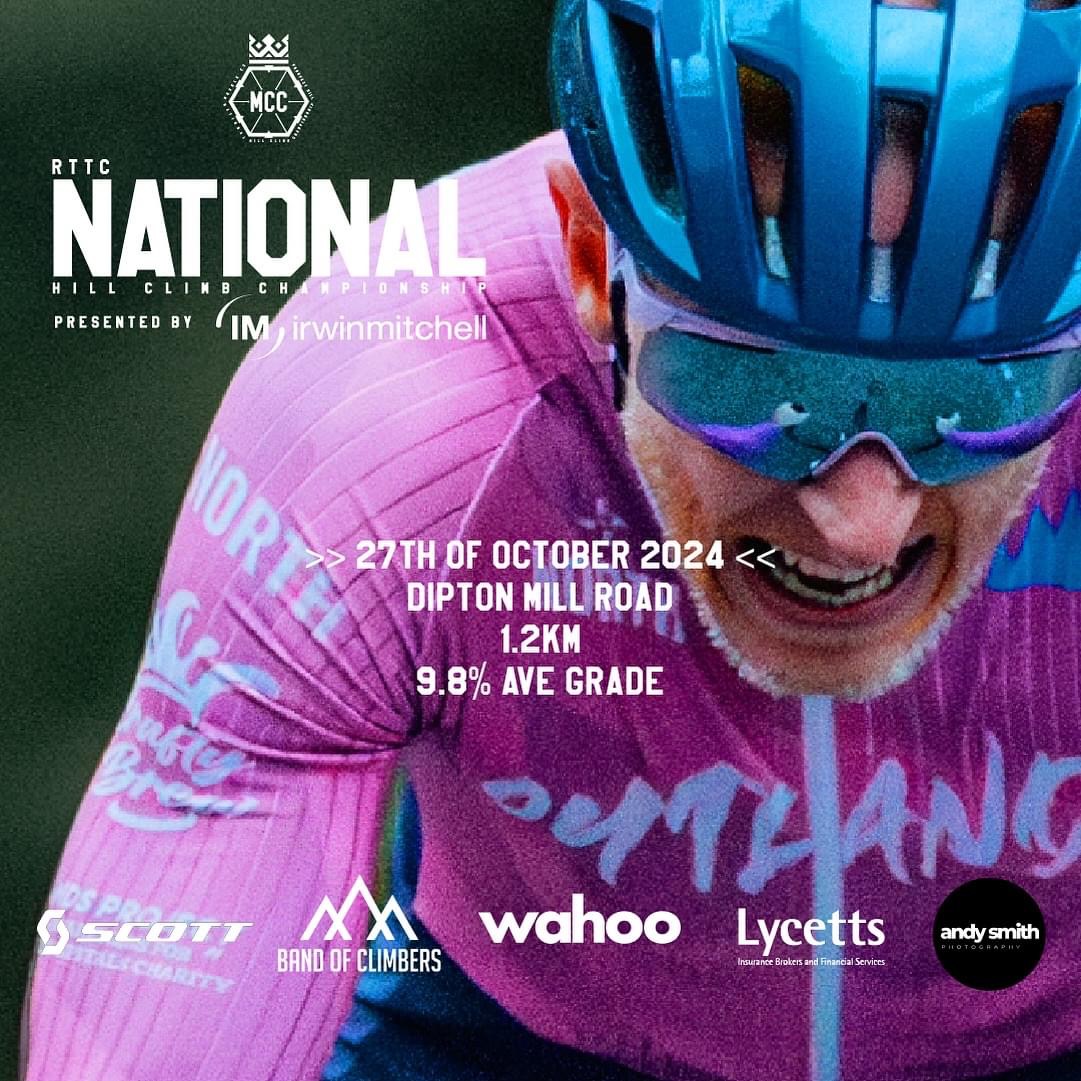
The Course: MH20
The Kibblesworth Hill Climb, or MH20, is a 1.2km climb with an average gradient of 4.6%. This course is a bit deceptive—the gradient isn’t super steep all the way through, but there are a few tough pitches, along with some sections where the road flattens out or even dips slightly. It’s a tricky one to pace, and knowing when to push and when to save energy can make all the difference. Two practise runs early in the morning give me a game plan and mental race markers of where to change gear and push harder! For this race, I set myself a goal of finishing under 5 minutes.
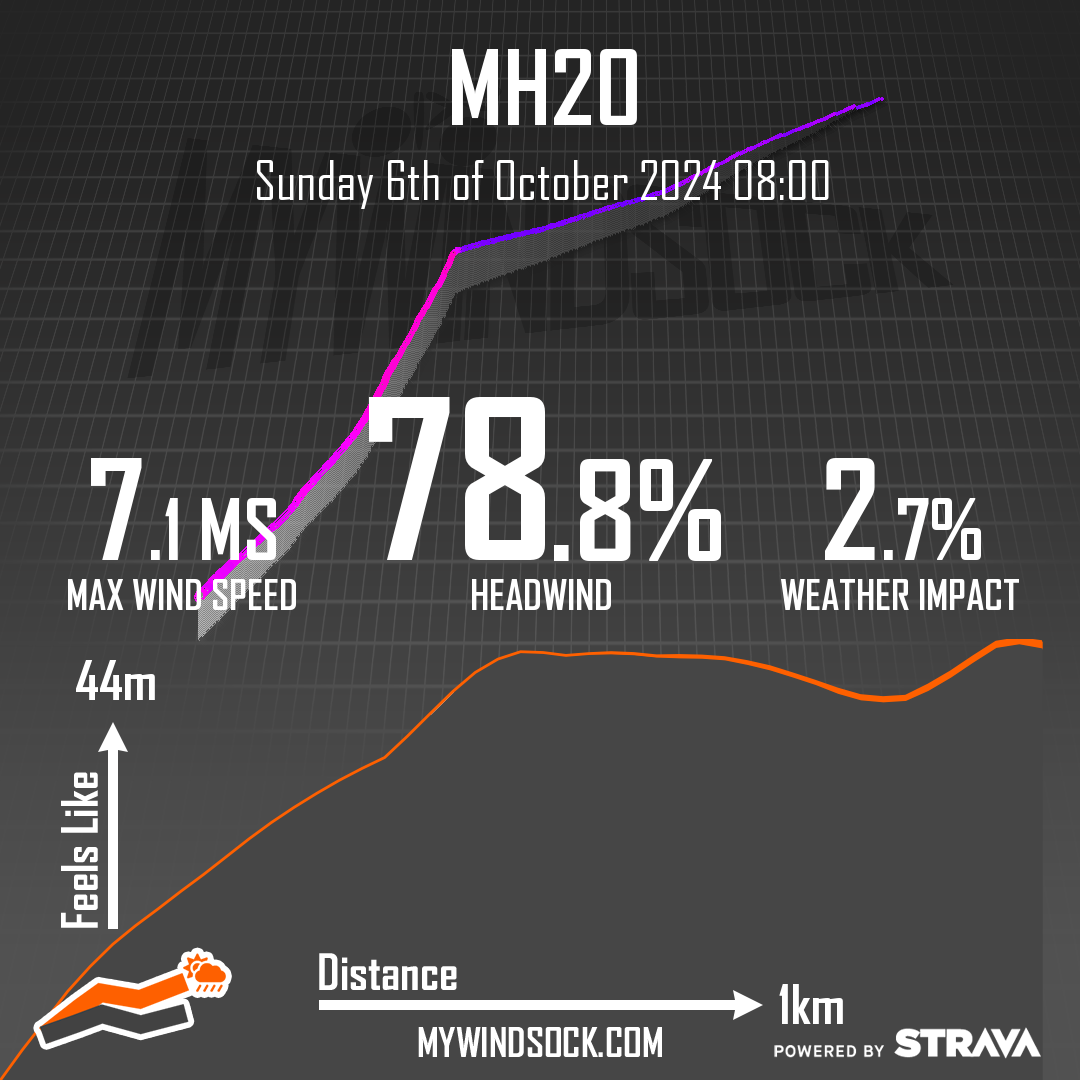
What Fitness Level is Needed?
Again, if you’re wondering about getting involved in racing. One of the biggest questions I hear from people considering racing is, “Am I fit enough?” It’s a question I asked myself multiple times! And the answer really depends on the type of race you’re entering. Hill climbs are different from time trials because they require short, intense efforts rather than long, sustained power. But that doesn’t mean you need to be a pro cyclist to take part.
Take me, for example. I’ve always been into cycling—mainly mountain biking—but at the start of this year, I hadn’t touched a bike in over a year. The last time I rode seriously was during a Movember charity challenge, where I covered 990 miles (the distance from my home to my company’s head office in Germany) in one month. That challenge left me so burned out that even looking at a bike made me wince.
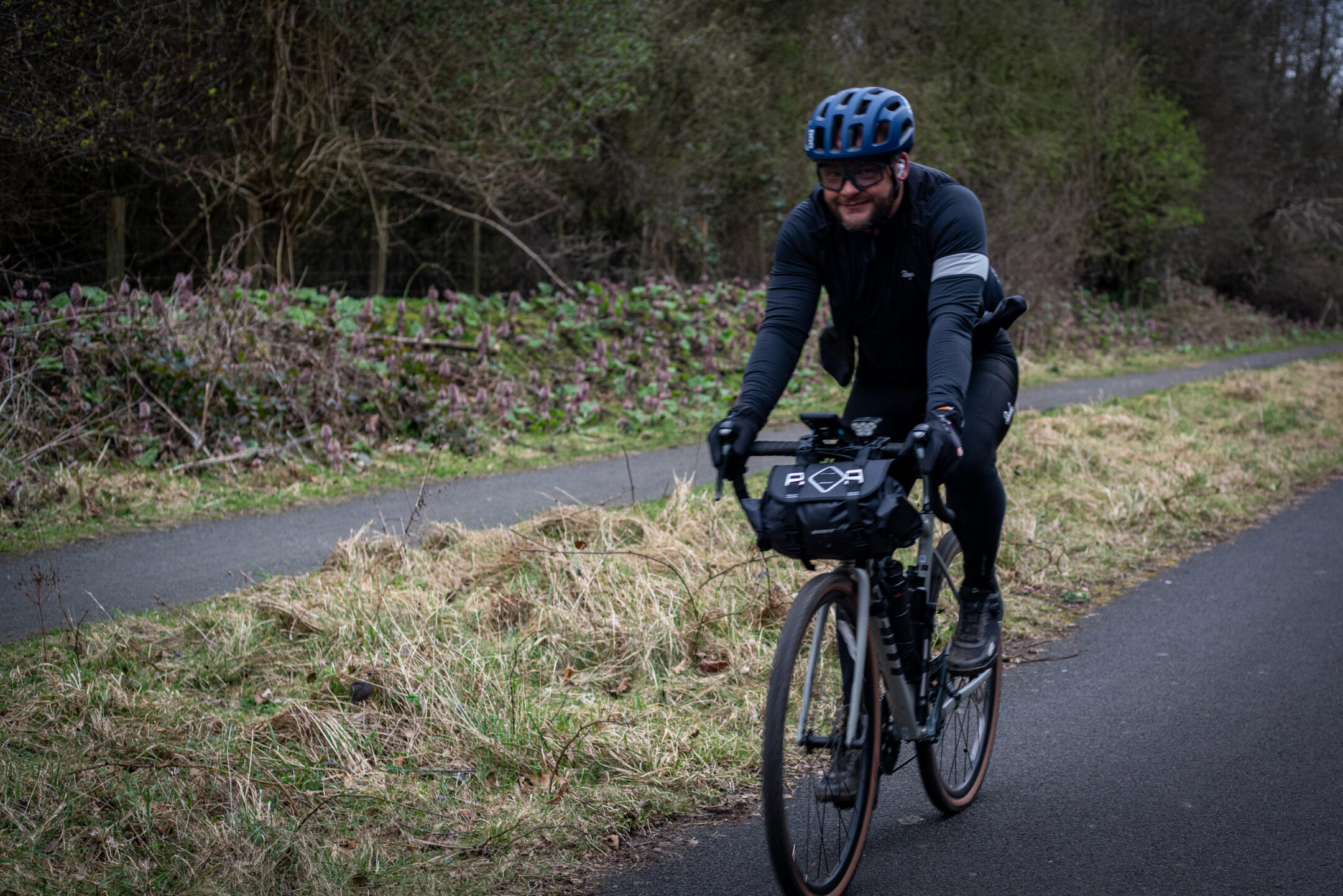
Fast forward to March, April of this year, and I decided to get back into it the saddle. My fitness was nowhere near where it had been, and I was essentially starting from scratch. I didn’t enter first race until September, and it was a considered but unplanned decision! I had built up my endurance by going out on longer rides with my club, sometimes just me—sometimes spending entire days cycling through Northumberland.
If you can go out for a full day of cycling and enjoy it, chances are you’re fit enough to enter a hill climb or time trial. Hill climbs, in particular, are often short but intense efforts, with my longest climb to date being about 15 minutes. It’s about pushing yourself against the clock and giving your best effort, regardless of how fast or slow you are. So don’t be put off by thinking you’re not fit enough. Everyone starts somewhere!
Training for Hill Climbs
For the Kibblesworth race, I focused on balancing my training between VO2 max intervals, threshold climbing repeats, and sprint hill intervals. Here’s a breakdown of the key sessions I used to prepare:
• VO2 Max Intervals : This is all about pushing my aerobic limits. After a 15-minute warm-up, I hit five 3-minute efforts at 120% of my FTP, with 3 minutes of easy spinning in between. These all-out efforts help build the high-end power needed for shorter, punchy climbs like Kibblesworth.
• Threshold Climbing Repeats : This session is about improving my sustained power on climbs. I did four 8-minute climbing intervals at 95-100% of my FTP, with a lower cadence of 75-85 rpm. This helps to build strength endurance and replicates the feeling of grinding up a hill.
• Sprint Hill Intervals : These are short, sharp efforts to develop explosive power. I did six 1-minute hill sprints with a focus on torque, keeping my cadence at 80-90 rpm. The idea here is to push hard, recover, and then push hard again, simulating the kind of intensity needed for the steeper sections of the hill climb.
In addition to the on-bike training, I also incorporated strength work in the gym. Core stability and leg strength are crucial for hill climbing, so I focused on exercises like squats, lunges, and planks to build power and maintain form on the bike. As well as fitting in a mobility session each day, using Bend App!
Race Day: The Climb
Race day arrived with a chilly breeze and plenty of nerves. This was a big day for North Tyneside Riders, as we had one of our largest turnouts of the season, and the atmosphere was buzzing with excitement.
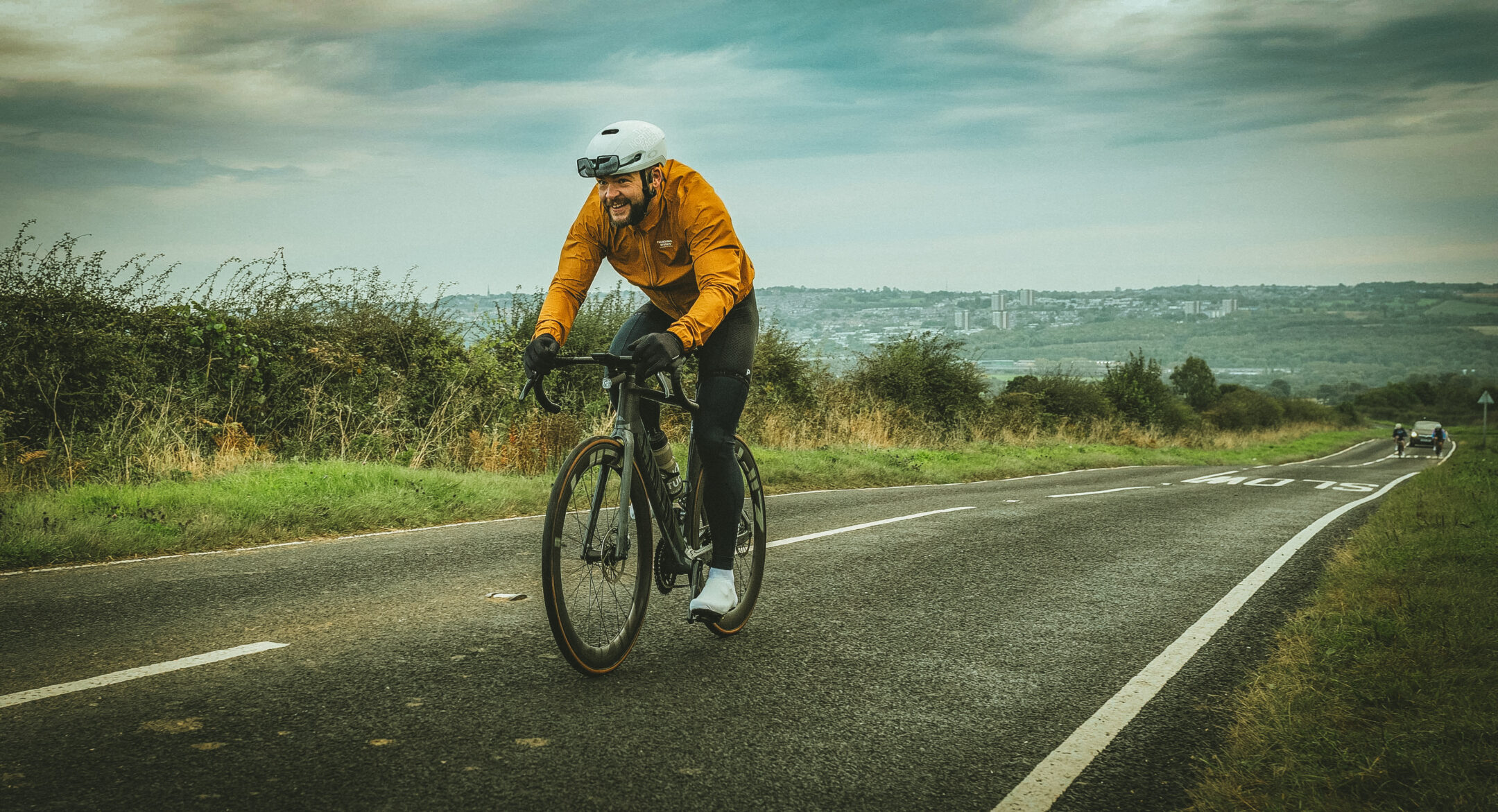
I arrived at the start line feeling strong. My strategy was to keep a high cadence for the steep pitches and save my out-of-saddle efforts for the final section. The first steep pitch hit quickly, and I focused on keeping my legs spinning as fast as possible. As the gradient eased, I shifted gears and took a moment to catch my breath before the next steep section.
One of the best parts of these hill climbs is the support from spectators and fellow riders. Hearing the cheers and cowbells along the way — especially from clubmates like Ian Gallon and the ever-encouraging pro level photography from Dubs Devlin — really helps push you through the pain. It’s hard to describe the boost you get when you hear your name being called as you dig deep on a tough climb.
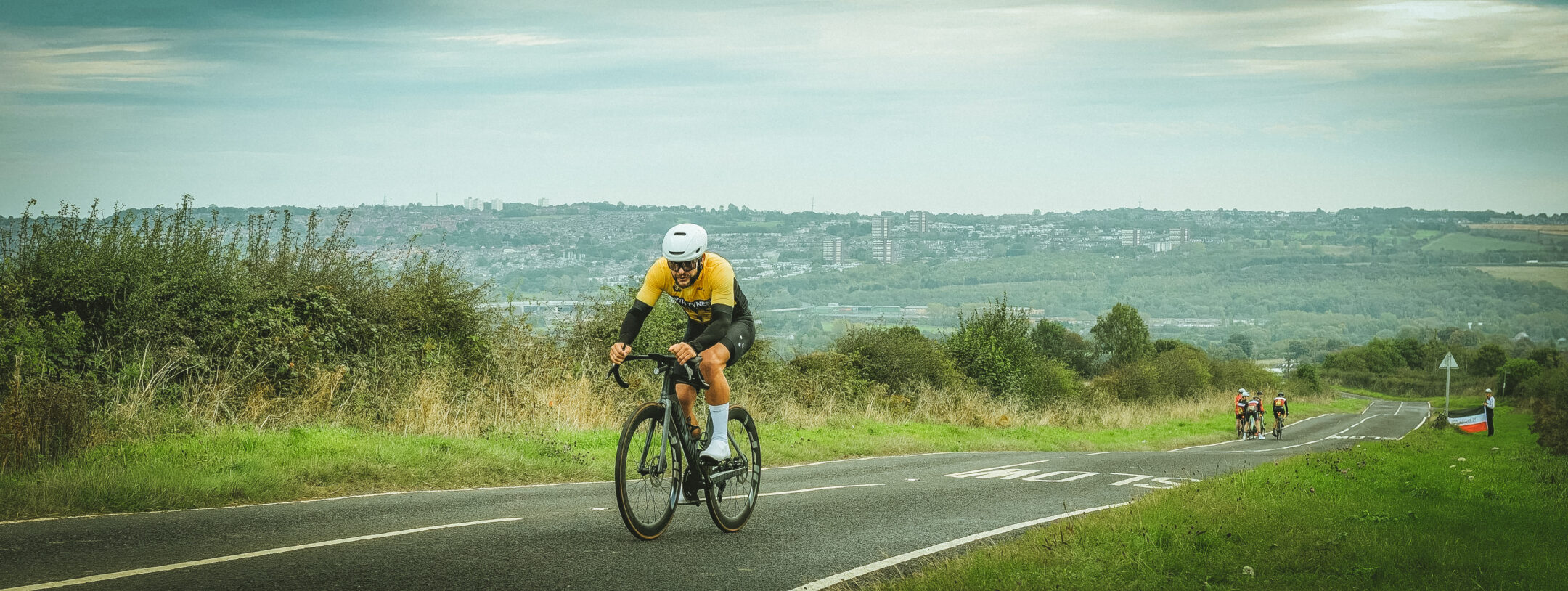
As I approached the final climb, I could hear Sarah and Eleanor shouting “GO GO GO!” which gave me the final burst of energy I needed to get out of the saddle and push to the top. Once the gradient eased, it gave me the chance to really open up, tucking into my best aero position , still need to remember to tuck in my elbows, and pick up some speed as I sprinted to the finish line and shooting past the chequered flag shaking with adrenaline and exhilarated! It felt good to be in control of my pacing and to hit my target again. I was feeling back, almost, in shape!

Post-Race & Results
After catching my breath, I headed back down to HQ to join the rest of the NTR crew. It was great to see so many club members out racing and supporting each other. We even had a few newcomers—Caroline, who completed her first race, and Jamie, who tackled his second hill climb. Huge congratulations to both of them!
While my focus wasn’t on winning, I was thrilled with my time of 4 minutes and 35 seconds, comfortably beating my goal of sub-5 minutes. And, as always, the post-race camaraderie was one of the highlights. We sat around, exchanged stories, and enjoyed some well-deserved cake and coffee while celebrating another successful day of racing.
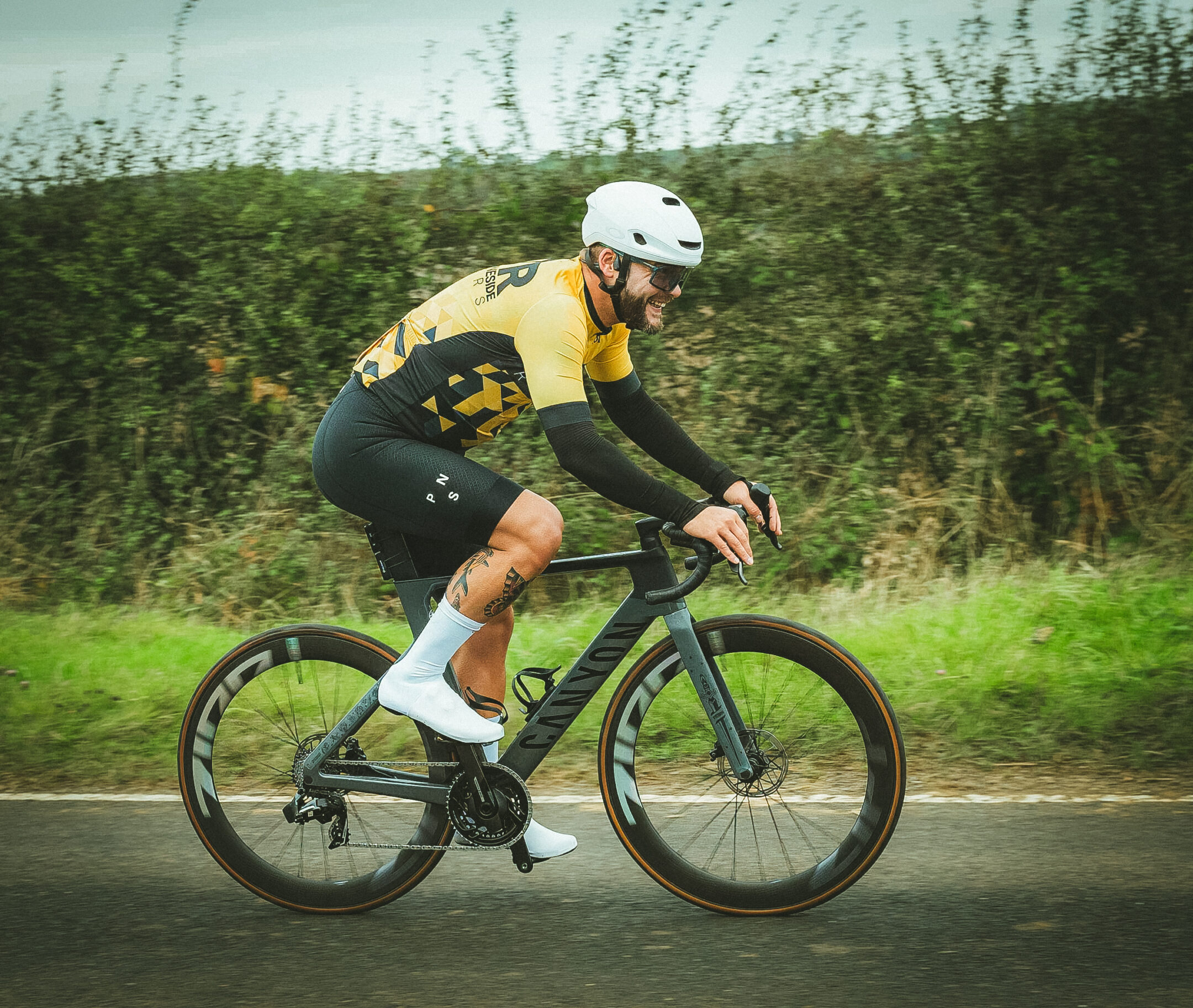
Looking Ahead
Now, with Nationals just around the corner, the focus is on finishing the season strong. The next few weeks will be all about fine-tuning my training, staying healthy, and mentally preparing for my biggest race of this year.
It’s been an incredible journey so far, and I can’t wait to see what the final few weeks of the season have in store. Whether you’re thinking about entering a race or just want to get involved in the local cycling community, I can’t recommend it enough. Clubs like Sunderland Clarion and North Tyneside Riders make the sport welcoming and accessible for everyone.
To find a club near you, check out the British cycling website, must clubs have different rules for joining so make sure you reach out and discuss first. There are loads of great clubs in the North East!!
Links
British Cycling – Club Finder
Cycling time Trials – Home Page
National Hill Climb Championships – About
Also worth mentioning that Durham & Northumberland Cycling Association have their Annual awards on the 30th of November and I look forward to seeing you all there! If you haven’t already, make sure to reach out to Sharon Dyson for ticket info and more event details!!
And with only one more hill climb still open for entry (besides Nationals, which closes today! 8th of October), the Outlands Hill Climb on the 20th of October is your last chance to warm up those legs before the big finale. This is the perfect opportunity to fine-tune your climbing skills in a fun, supportive environment. The entry deadline is fast approaching—13th of October—so don’t miss out! It’s shaping up to be an absolute hill climb party, with plenty of camaraderie and competition. Be there, or well… be square!
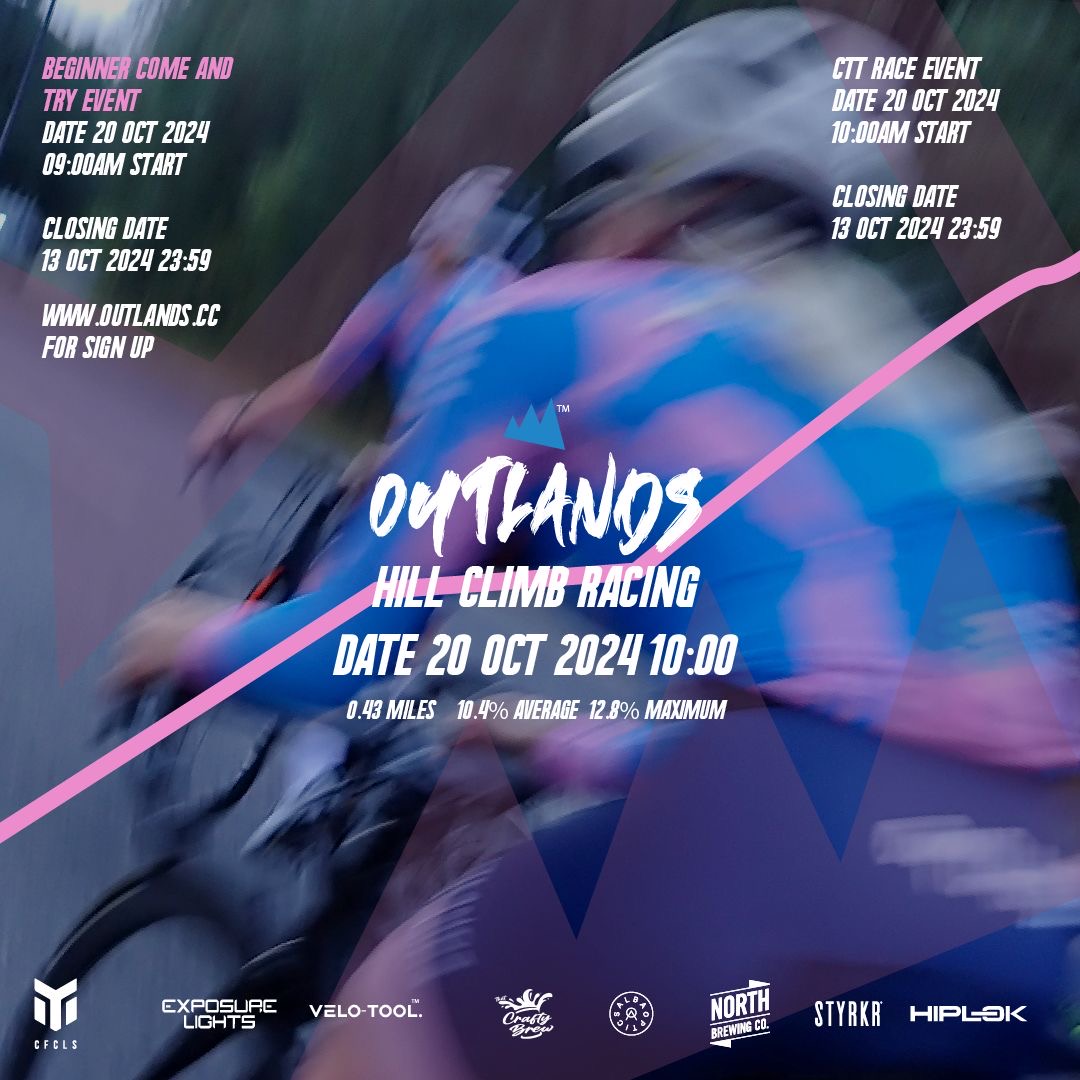
Results
Open Male
1. Hugo Storey (Muckle Cycle Club) – 3:04.4
2. Alexander Storey (GS Metro) – 3:05.8
3. Adam Pinder (Muckle Cycle Club) – 3:08.2
Open Female
1. Sarah Wilkinson (Blaydon CC) – 4:09.3
2. Madeleine Bell (Musselburgh Roads CC) – 4:09.5
3. Elspeth Chatto (Blaydon Cycling Club) – 4:21.8
Espoir Male
1. Jack Trainer (Houghton CC) – 4:22.3
Espoir Female
1. Eleanor Dixon (Outlands) – 4:58.8
Veteran Male
1. Colin Atkinson (Muckle Cycle Club) – 3:25.9
2. Graeme Wardale (South Shields Velo Cycling Club) – 3:37.0
3. Joe Stringer (Muckle Cycle Club) – 3:49.0
Veteran Female
1. Sarah Wilkinson (Blaydon CC) – 4:09.3
2. Louise Burnie (Blaydon CC) – 4:34.2
3. Caroline Cunningham (North Tyneside Riders CC) – 5:03.8
